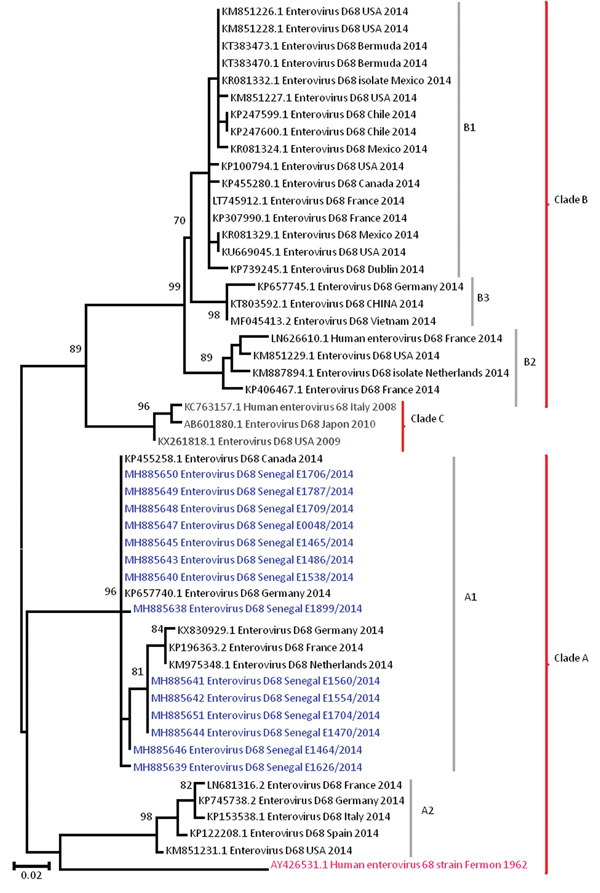Volume 25, Number 7—July 2019
Dispatch
Low Circulation of Subclade A1 Enterovirus D68 Strains in Senegal during 2014 North America Outbreak
Figure 2

Figure 2. Phylogenetic relationships among enterovirus D68 (EV-D68) strains detected in Senegal (blue) and other countries (black) during the US outbreak period, September–December 2014. The phylogenetic tree based on nucleotide sequences of partial viral protein 1 genomic regions of EV-D68 strains was generated using the neighbor-joining method in MEGA6 (http://www.megasoftware.net). Sequences are identified by GenBank accession number, country, and period of detection. The phylogenetic tree is rooted by the oldest EV-D68 sequence in GenBank, the Fermon strain (pink), collected in 1962 in California, USA. We performed 1,000 bootstrap replicates to determine the consensus tree; support for nodes present in >70% of the trees are annotated. Scale bar indicates nucleotide substitutions per site.
1These senior authors contributed equally to this article.